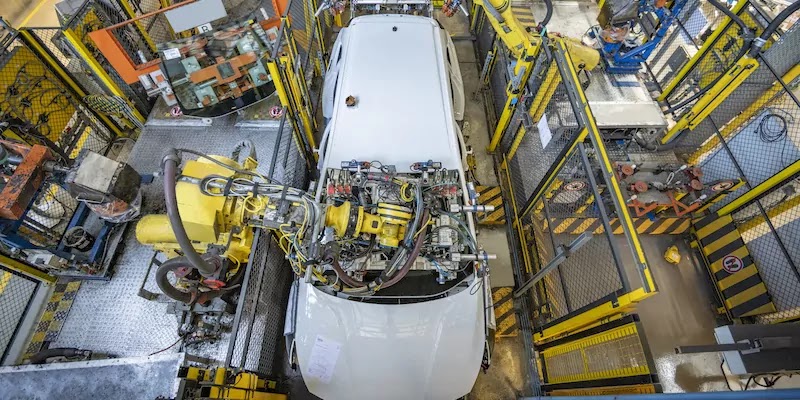Zero-Based Budgeting (ZBB) is like solving a financial puzzle. Instead of relying on the previous year’s budget, ZBB requires you to evaluate and justify every expense from the ground up, justifying its necessity and alignment with strategic goals. It’s like starting with a blank canvas and carefully selecting each budget item based on its value and contribution to your financial objectives. This approach ensures that every piece of your budget fits together harmoniously to create a clear and purposeful financial picture.
In this blog post, we will delve into the concept of zero-based budgeting, exploring its definition, advantages, disadvantages, implementation steps, and tools needed.
What is Zero-Based Budgeting?
The zero-based budgeting process is a strategic budgeting approach that mandates a fresh evaluation of all expenses during each budgeting cycle. Unlike traditional budgeting, where previous spending levels are typically adjusted, ZBB requires individuals or organizations to justify every expense from the ground up. The aim is to optimize resource allocation by ensuring funds are allocated to activities that align with strategic objectives and generate the highest value.
Peter Pyhrr, an accountant and consultant, is credited with developing the concept of zero-based budgeting (ZBB) in the 1970s. Pyhrr recognized the limitations of traditional methods of budgeting that relied on incremental adjustments to previous budgets. He believed that organizations needed a more rigorous approach to budgeting that would ensure resources were allocated efficiently and aligned with strategic objectives.
Pyhrr introduced the idea of starting the budgeting process from a “zero base,” meaning that every expense had to be justified from scratch. This approach challenged the assumption that previous spending levels were automatically justified, requiring individuals and departments to provide a detailed rationale for each expenditure.
By requiring a fresh evaluation of all expenses, Pyhrr aimed to eliminate unnecessary costs, identify inefficiencies, and promote a more focused use of resources. His goal was to instill a sense of accountability and ownership among budget holders, encouraging them to critically analyze and justify their budget requests.
Advantages of Zero-Based Budgeting
Zero-based budgeting offers several advantages for both businesses and individuals. Some key benefits include:
- Cost Savings: ZBB requires a thorough evaluation of all expenses, challenging the assumption that last year spending levels are justified. By scrutinizing each line-item expense from scratch, ZBB helps identify unnecessary or redundant costs, preventing overspending. This process allows for cost-cutting and setting savings goals, leading to lower costs and improved financial efficiency.
- Enhanced Efficiency: ZBB encourages resource reallocation towards high-impact activities. By evaluating expenses based on their value and alignment with strategic objectives, ZBB ensures that resources are allocated to areas that generate the highest return on investment. It promotes a more focused and effective cost management.
- Increased Accountability: With ZBB, individuals or departments must justify their budget requests and align them with organizational financial goals. This fosters a culture of accountability, as each expense must demonstrate its purpose and value. ZBB creates a sense of ownership and responsibility among budget holders.
- Flexibility and Adaptability: Traditional budgeting systems often rely on historical data and incremental adjustments. ZBB, on the other hand, is not bound by past spending patterns. It allows for better adaptation to changing circumstances, emerging priorities, and new opportunities. ZBB promotes agility in resource allocation, enabling organizations to respond effectively to evolving market conditions.
- Cost-Conscious Culture: ZBB can foster a cost-conscious culture within an organization. By instilling a mindset of questioning and justifying expenses, ZBB encourages employees to think critically about costs and seek more efficient alternatives to cut back. This culture of cost-consciousness can lead to continuous improvement and a focus on value creation.
- Improved Decision-Making: ZBB provides a comprehensive view of expenses and their impact on organizational goals. By evaluating each expense category, decision-makers gain better visibility into the cost structure of the organization. This enables informed decision-making, as leaders have a clearer understanding of the trade-offs involved and can make strategic choices based on reliable data.
How to implement Zero-Based Budgeting?
Implementing zero-based budgeting (ZBB) in an organization involves careful planning and execution. Here are the key steps to follow:
1. Identify Objectives: Clearly define the organization’s goals and strategic direction to establish the foundation for the budgeting process. Ensure that budget allocations align with these objectives and prioritize them accordingly.
2. Evaluate Expenses: Review each expense category, including recurring expenses such as subscriptions, and question their necessity and relevance. Scrutinize both fixed expenses like rent and utilities, and variable expenses such as marketing and travel. Identify areas where costs can be optimized and potential savings can be made.
3. Build Budgets: Create new budgets from scratch, ensuring that each item serves a clear purpose and directly supports the organization’s strategic goals. Consider the importance of each expense category, allocating resources accordingly to maximize their impact. To ensure sufficient funds are available for unforeseen circumstances an emergency fund can be set up.
4. Prioritize Resources: Allocate resources based on their importance and their contribution to the organization’s objectives. Give priority to high-value activities and projects that align with strategic goals. Take budget constraints into account and make informed decisions on resource allocation.
5. Monitor and Review: Regularly monitor the budget implementation, track expenses, and assess performance against objectives. Keep a close eye on spending and make adjustments as necessary to maintain alignment with the organization’s goals. This ongoing monitoring and review process ensures that the budget remains effective and adaptable to changing circumstances.
By following these steps, organizations can successfully implement zero-based budgeting, optimize their resource allocation, and achieve greater financial efficiency while aligning with their strategic objectives.
Disadvantages of Zero-Based Budgeting
While zero-based budgeting can be a powerful tool for organizations, there are several important considerations and potential challenges to be aware of:
- Time and Effort: Implementing zero-based budgeting can be a time-consuming process, especially short-term during the initial stages. It requires a significant investment of effort to thoroughly evaluate and justify every expense from scratch. Adequate planning, data collection, and stakeholder involvement are crucial for a successful implementation.
- Change Management: Adopting a new budgeting method like zero-based budgeting often requires a shift in organizational culture and mindset. Employees may need to adjust to a more rigorous and detailed approach to budgeting, which can lead to resistance or discomfort. Change management practices, such as communication, training, and engagement, are important to facilitate a smooth transition and ensure widespread adoption.
- Complexity: Zero-based budgeting can be more complex than traditional budgeting, especially for large organizations or individuals with diverse financial obligations. The process requires meticulous documentation and tracking systems to ensure accurate evaluation, allocation, and monitoring of expenses. Managing the complexity of ZBB may require additional resources, expertise, and technology to support the budgeting process effectively.
- Resource Allocation Challenges: Zero-based budgeting may pose challenges in resource allocation, particularly when dealing with competing priorities and limited resources. The thorough evaluation of expenses from scratch can sometimes lead to difficult decisions and trade-offs between different activities, projects, or departments. Balancing strategic objectives, budget constraints, and the need for cost optimization requires careful consideration and decision-making.
- Initial Disruption: Implementing zero-based budgeting may cause initial disruption within the organization as existing budgeting practices and processes are replaced or modified. This disruption can impact the workflow, roles, and responsibilities of individuals involved in the budgeting process. Adequate communication, training, and support are essential to minimize disruption and ensure a smooth transition.
By understanding and addressing these potential challenges, organizations can better prepare themselves for the implementation of zero-based budgeting and mitigate any potential negative impacts on the budgeting process and organizational dynamics.
What are the best tools to use for zero-based budgeting?
- Spreadsheets: Traditional spreadsheet applications like Microsoft Excel or Google Sheets can be used to create and manage zero-based budgets. They provide flexibility in organizing budget data, performing calculations, and generating reports. Spreadsheets allow for customization and can be a cost-effective option for smaller organizations.
- Financial Planning and Analysis (FP&A) Software: Offer dedicated features for budgeting, forecasting, and financial analysis. These tools provide a centralized platform for top-down and bottom-up budgeting creation, collaboration, scenario modeling, data integration, and reporting. They often come with advanced analytics capabilities, enabling organizations to make data-driven budgeting decisions.
- Enterprise Resource Planning (ERP) Systems: ERP systems integrate various financial processes, including budgeting. These systems offer modules specifically designed for budget creation, tracking, and reporting. They provide a comprehensive view of financial data, facilitate data integration, and support collaboration among different departments.
- Budgeting and Planning Software: Dedicated budgeting and planning software are designed to streamline the budgeting process. These tools provide features like budget templates, workflow automation, data consolidation, scenario modeling, and reporting. They often offer user-friendly interfaces and enable collaboration among budget stakeholders.
- Data Visualization Tools: Data visualization tools enable organizations to visualize budget data and financial insights. These tools create interactive charts, graphs, and dashboards that enhance the understanding and communication of budget information. Data visualization tools can help identify trends, patterns, and anomalies in the budgeting process.
- Project Management Software: Project management tools like Asana, Trello, or Jira can be utilized to track budgeting tasks, deadlines, and milestones. These tools help manage the workflow, assign responsibilities, and ensure accountability during the budgeting process. They enhance collaboration and provide transparency into the progress of budget-related activities.
How can IBM Planning Analytics help with zero-based budgeting?
IBM Planning Analytics is an integrated business planning and analysis solution that can greatly assist with zero-based budgeting (ZBB) initiatives. Here’s how IBM Planning Analytics stands out and provides value in implementing ZBB:
- Advanced Functionality: IBM Planning Analytics provides robust features specifically designed to support ZBB, such as data collection, analysis, scenario modeling, and budgeting capabilities. It also offers integration with spreadsheets, allowing organizations to leverage existing spreadsheet data and seamlessly transition to a more sophisticated budgeting solution.
- Collaborative Environment: IBM Planning Analytics fosters collaboration among stakeholders involved in the budgeting process. It allows teams to evaluate expenses, allocate resources, and justify budget requests based on strategic objectives. This collaborative environment enhances transparency, and accountability, and ensures that budget decisions align with organizational goals.
- AI-Infused Capabilities: IBM Planning Analytics utilizes artificial intelligence (AI) and machine learning capabilities to provide advanced analytics and forecasting. These AI-infused features help organizations gain deeper insights into their budget data, identify trends, and make more accurate predictions, enabling them to make data-driven budgeting decisions.
- Integration Capabilities: IBM Planning Analytics integrates seamlessly with other systems and data sources, such as accounting platforms or ERP systems. This integration ensures the availability of accurate financial data for budgeting decisions, eliminating the need for manual data entry and reducing errors.
- Scalability and Flexibility: IBM Planning Analytics is highly scalable and suitable for organizations of all sizes. It can adapt to changing business needs and accommodate complex budgeting requirements. Whether it’s a small organization or a large enterprise, IBM Planning Analytics can effectively support the ZBB process.
- User-Friendly Interface: IBM Planning Analytics offers a user-friendly interface that simplifies the budgeting process. Its intuitive design and interactive dashboards allow users to navigate through budget data, perform analyses, and generate reports with ease.
While there are other tools available for zero-based budgeting, IBM Planning Analytics stands out due to its powerful and flexible platform that allows for comprehensive functionality, AI-infused capabilities and user-friendly interfaces. These factors make IBM Planning Analytics a preferred choice for organizations seeking to implement ZBB effectively and achieve cost optimization and accountability throughout the budgeting cycle.
Zero-based budgeting is an innovative type of budgeting that challenges conventional financial practices. By reevaluating expenses from scratch and aligning them with strategic objectives, ZBB promotes cost optimization, efficiency, and accountability. While implementing ZBB requires significant effort and change management, the benefits of this approach can outweigh the challenges.
Source: ibm.com








